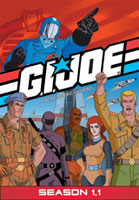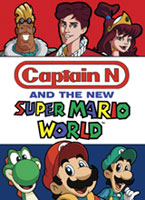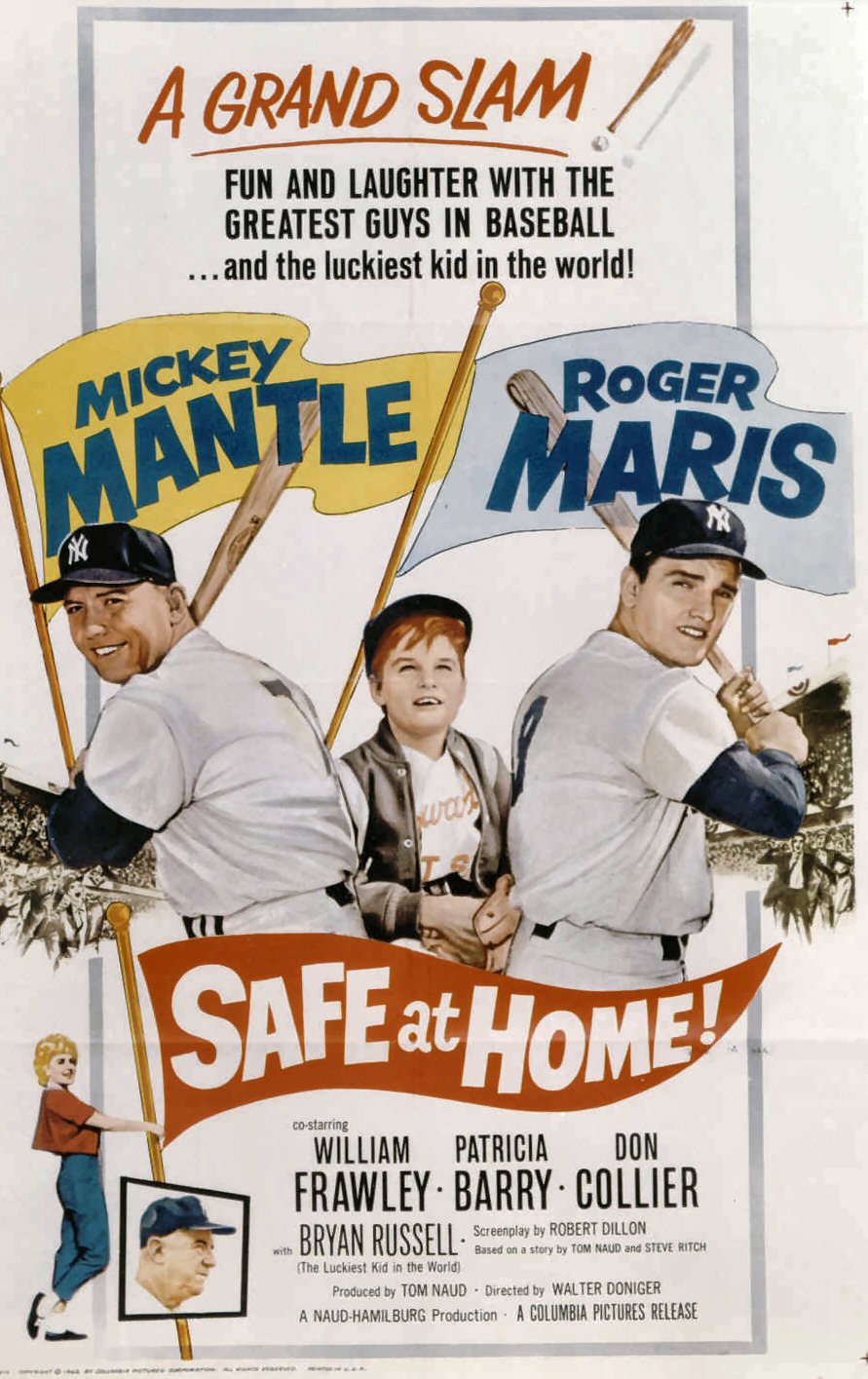Along with Transformers and He-Men, G.I. Joe played a huge part in my childhood playtime. I have fond memories of arming my action figures and transforming my bedroom into the ultimate battleground where Joe and Cobra forces could continue their never ending battle for whatever it was that I had them fighting over. But the love for G.I. Joe didn’t stop at toys. I was also a devout follower of the comic and cartoon. With the re-release of the first part of the cartoon’s first season, I’m now questioning why I spent a half hour every afternoon following the epic battle of good versus evil. Although it’s colourful and big in scope when compared to other action figure fare from the time, there’s also the fact that there’s little to connect with in the characters. The roll call changes so quickly, presumably to help sell toys, toothbrushes and whatever else Hasbro could plaster the Real American Hero slogan on, that it’s hard to genuinely get to know them beyond brief introductions.
G.I. Joe is an extremely elite arm of the American military. Each member has their own specialty or gimmick, which translates often into a stereotype and a really cool action figure with equally cool accessories. For example, you’ve got Spirit, a Native American with braids and a pet eagle. There’s also Gung-ho, a tough guy marine with a tattoo on his chest, porn star moustache full-on Village People vibe.
The Joes are constantly after Cobra, a group of bad guys that come from mysterious origins but are bent on taking over the world. Cobra fits perfectly into the cartoon as their members often come with either outlandish gimmicks or costumes. Among my favourites: Destro, the chrome headed second-fiddle; Zartan, a master of disguise who turns green in the sun; and Major Bludd, a throwback villain that looks like a Nazi-pirate hybrid.
Shout Factory’s G.I. Joe: Season 1.1 brings together the cartoon’s first 22 episodes. The structure is unique in that the first 15 episodes are really epic cartoon mini-series, each lasting a full five episodes. These aired between 1983 and 1985, presumably as a launch for toys as well as being a big-time cartoon event. By the time 1985 rolled around the franchise was big enough to sustain an on-going series. The third miniseries and the ensuing seven episodes on this collection could be considered the launch of the regular series.
Back when I was a kid playing with the toys, the Joes and Cobras personalities came through in the file card that was on the back of the package and how I chose to portray them in my playtime. The file cards are long gone and my memories of playing with them have pretty much faded. Watching the cartoon now, it’s tough to get beyond the character stereotypes as there’s so many to keep track of as the Joe roll call changes with each new set of action figures that rolled out.
The show comes off as rather silly and although I appreciate the bigger scope of the five-episode story arcs, it’s really not necessary. A lot of the action felt tedious to me now. The silly vehicles and costumes are still fun but not much changes from episode to episode. Cobra Commander comes up with a dastardly plot, G.I. Joe thwarts said plan and Cobra Commander slithers away whilst scream and shaking a mean fist. There’s only so many variations you can do with it before the format gets boring. The occasional diversion exists but for the most part, this is how each episode plays out.
G.I. Joe will always have a place in my memories. But like many things, the memories are sometimes best left in the past. Seeing G.I. Joe today is a very different experience today as I’m not wrapped up in searching for new toys or making up adventures in my friend’s backyard. Watching the show today makes me wonder a little about what I was thinking for devoting so much time and effort to such a silly concept. So maybe it’s best to just leave this part of my childhood in my memories rather than revisiting them.
G.I. Joe: Season 1.1 DVD Review

Shout Factory’s bow into the classic G.I. Joe animated series comes in as a four-disc set featuring 22 episodes. The cartoon is show in a solid full screen format that does show some wear and tear given its age, but overall it looks solid given the tremendous changes in technology since the show first aired. Audio is in Dolby Digital.
Bonus features are led by a three-part documentary with series writer Ron Friedman who talks in some detail about his work on the show. Being something of a nostalgia buff, I was tickled with the inclusion of the iconic public service announcements. They’re as corny as anything you’ll likely ever see but it’s sure fun to hear the classic line, “And knowing is half the battle,” once again. A total of seven PSAs are included on topics ranging from what to do if you catch fire to how to build a proper tree house. The nostalgia continues with a small collection of toy commercials that are a little strange as human faces are blurred out. Finally, there’s the original 1963 Toy Fair presentation launching the G.I. Joe brand and a script for the episode “Jungle Trap.”













